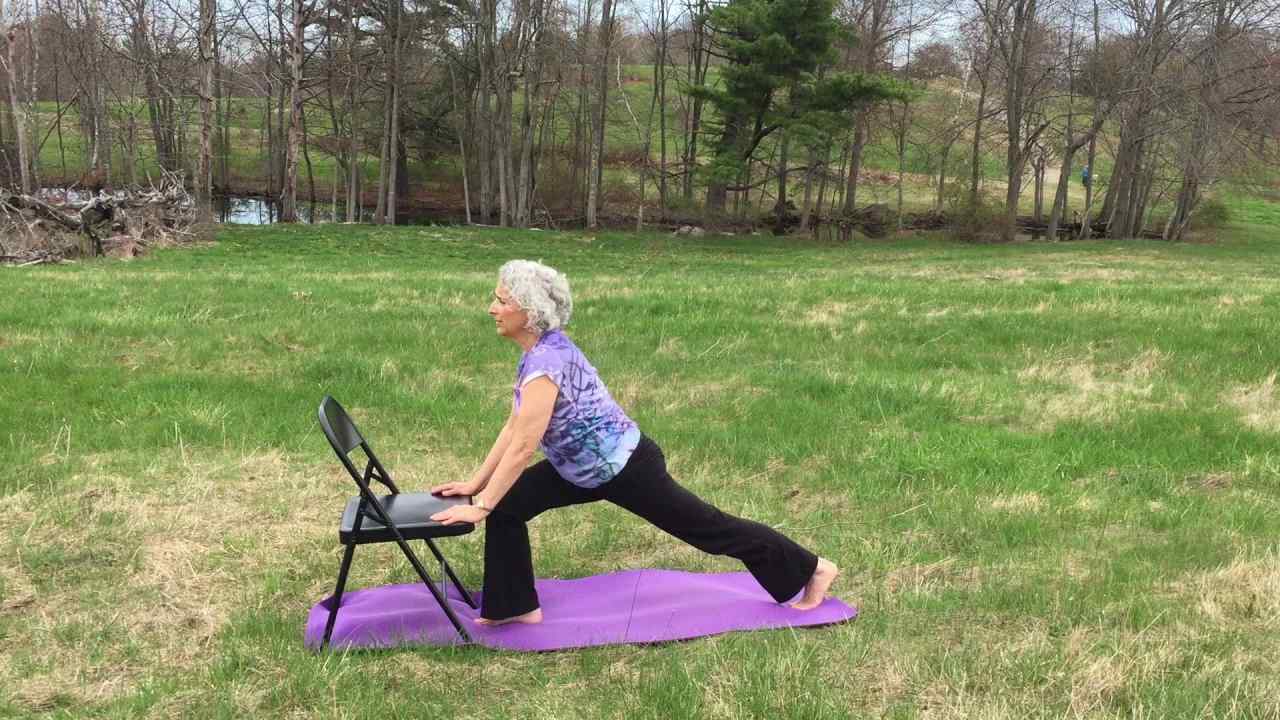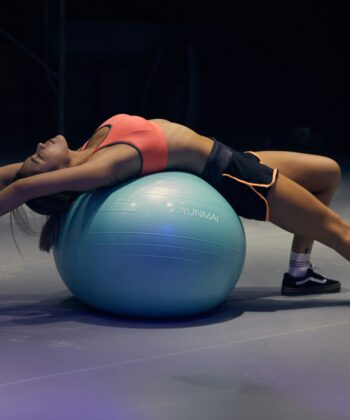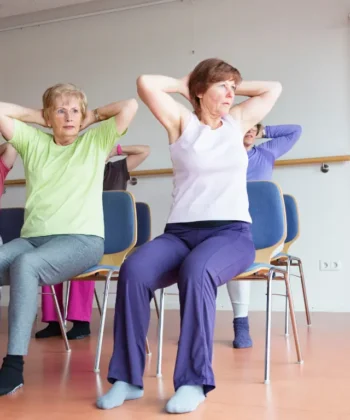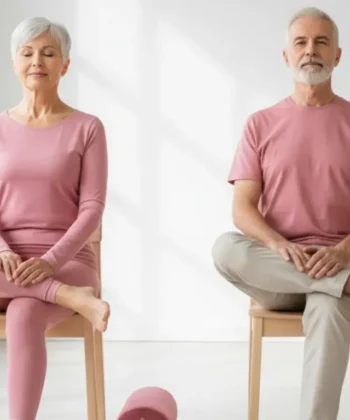
In the United States, 70% of adults over 65 face physical limitations. This makes exercise very important for staying healthy. Pilates and yoga are two low-impact options for seniors. But, which one is best for you?
Choosing between pilates and yoga depends on your goals and physical abilities. Both can be adjusted to fit different needs. In this article, we’ll look at the differences and help you pick the right one.
Key Takeaways
- Regular exercise is key for a healthy life as you age
- Pilates and yoga are great low-impact options for seniors
- Both offer many physical and mental health benefits
- Think about your goals and abilities when picking an exercise
- Pilates vs yoga can be tailored to fit your needs
- Exercise is vital for a healthy life as you get older
Table of Contents
Understanding Exercise Needs for Older Adults
As you age, your body changes in ways that affect how you move. It’s key to know these changes and adjust your workout routine. Seniors have special exercise needs to stay safe and effective. Low-impact exercises are great because they’re easier on your joints and body.
Staying active helps keep your balance and flexibility. These are important to avoid falls and injuries. As you get older, it’s harder to do everyday tasks. Yoga or Pilates can help improve your balance and flexibility, lowering the risk of health problems.
Physical Requirements in Senior Years
In your senior years, your body needs different things. You might not be as strong or flexible, and you might have less energy. But, the right workout can help keep you healthy and feeling good. Here are some benefits of exercise for seniors:
- Improved balance and flexibility
- Increased strength and endurance
- Enhanced cardiovascular health
- Better management of age-related health issues
Importance of Low-Impact Exercise
Low-impact exercises are perfect for seniors because they’re gentle on your body. Yoga, Pilates, and swimming are great choices. They help with flexibility, balance, and strength without too much stress.
Balance and Flexibility Considerations
Keeping your balance and flexibility is critical for seniors. It helps prevent falls and injuries. Exercises like tai chi or yoga are super helpful. They improve your physical health and lower the risk of health problems as you age.
The Fundamentals of Pilates for Seniors
Pilates for seniors is a gentle exercise that builds core strength, flexibility, and body control. It’s perfect for improving balance and reducing fall risks. Plus, it boosts overall physical fitness. You can adjust the exercises to fit your needs, making it welcoming to many.

Key benefits of pilates for seniors include:
- Improved core strength, which can help with balance and stability
- Increased flexibility, which can reduce the risk of injury and improve overall mobility
- Enhanced body control, which can help with everyday activities and reduce the risk of falls
Starting with Pilates for seniors means doing exercises that focus on core, flexibility, and control. These can be tailored to your abilities. Pilates is a low-impact choice, ideal for seniors looking to stay active. It can enhance your health and wellbeing, and help prevent age-related issues.
Core Principles of Yoga Practice in Later Life
Exploring yoga for seniors reveals its core principles. It is a comprehensive practice that includes breathing, meditation and physical postures. These elements promote well-being and can improve flexibility, balance, and strength. They also aid in lowering anxiety and tension.

There are many yoga types for seniors, each with its own benefits. Hatha, Yin, and Restorative yoga are popular. These can be adjusted for seniors with mobility issues, making yoga accessible to all.
Different Types of Yoga Suitable for Seniors
- Hatha yoga: Emphasizes breathing exercises and physical postures
- Yin yoga: targets the deeper tissues, such as connective tissues and joints
- Restorative yoga: use props to assist the body in calming positions
Basic Poses and Modifications
Seniors should focus on basic yoga poses and modifications. Poses like downward-facing dog, warrior, and tree pose are key. Using blocks or straps can make these poses easier and more comfortable.
Breathing Techniques and Meditation
Breathing techniques are key in yoga, and they’re great for seniors. Alternate nostril breathing and diaphragmatic breathing reduce stress and promote mental peace. Meditation, in forms like guided or mindfulness, is also vital in yoga.
Pilates vs Yoga for Seniors: A Detailed Comparison
When looking at pilates vs yoga for seniors, it’s key to see the physical and mental health benefits. Both offer great advantages, but they’re different in how they approach things. Knowing how they can boost your health and mind is important.

Pilates helps build core strength, boosts flexibility, and improves posture. Yoga, by contrast, works on balance, breathing, and meditation for better physical and mental health. Both can help seniors get healthier, but they do it in their own ways.
Physical Benefits Comparison
- Pilates: improves core strength, flexibility, and posture
- Yoga: enhances balance, breathing, and overall physical well-being
Mental Health Benefits
Yoga and pilates are both beneficial for reducing tension and anxiety. Their gentle, low-impact nature is perfect for seniors wanting to improve health without too much effort.
Equipment Requirements
Pilates might need a mat and sometimes extra gear like bands or a reformer. Yoga just needs a mat and sometimes props like blocks or blankets. Knowing what you need can help pick the right one for you.
Safety Considerations for Both Practices
Exploring Pilates and yoga comes with the need to focus on safety. For pilates safety, it’s key to listen to your body. Modify or avoid moves that might hurt you. Yoga safety also depends on proper alignment, breathing, and smooth transitions between poses.
To ensure a safe practice, follow these tips:
- Always check with your doctor before starting a new exercise, if you have health issues.
- Choose a good quality mat for grip and cushioning to avoid falls.
- Begin slowly and increase your practice’s intensity and time as you get stronger and more flexible.
Being aware of safety helps you enjoy Pilates and yoga without injury. Drink plenty of water, pay attention to your body, and accept its limitations. This way, your practice will be safe and rewarding. Remember, safety is the core of both pilates and yoga.
Getting Started with Either Practice
Starting your Pilates or yoga journey is exciting. It’s key to find qualified instructors to help you. Look for local studios or gyms with classes for seniors or those with similar needs.

Before your first class, know what equipment you’ll need. Pilates might use a Reformer, while yoga needs a mat and sometimes blocks or straps. Knowing this helps you feel ready and comfortable.
Finding the Right Class
- Research local studios or gyms that offer Pilates or yoga classes
- Look for instructors with experience working with seniors or individuals with similar needs
- Consider the equipment needed to participate in the class
Prepare for your first session after selecting the appropriate class. Arrive early to meet the instructor. Be ready to talk about any health concerns or physical limits. With the right mindset and preparation, you’re set to enjoy the benefits of Pilates or yoga.
Impact on Common Age-Related Conditions
As you get older, you might face issues like arthritis, osteoporosis, or chronic pain. Pilates and yoga can help with these problems. They make you feel better and improve your health.

Pilates can make you more flexible and balanced. This helps prevent falls and injuries. Yoga, on the other hand, can lower stress and anxiety. This is good for your mental health and overall happiness.
Here are some ways pilates and yoga can help with age-related issues:
- They can reduce pain and swelling from arthritis.
- They can also strengthen bones to fight osteoporosis.
- They improve balance and flexibility, lowering fall risks.
- They help decrease stress and anxiety, boosting well-being.
Adding pilates and yoga to your routine can greatly benefit your health. It’s great for managing age-related conditions.
Time and Financial Investment Comparison
Thinking about Pilates or yoga means looking at time and money. Both offer classes, from group to private, affecting your budget. Class lengths vary, too, based on style and teacher.
How much you spend depends on class type and how often you go. Prices range from $10 to $30 per session, based on location and teacher. You might also need to buy gear, like a yoga mat or Pilates reformer, adding to costs.
Class Costs and Availability
- Group classes: $10-$20 per session
- Private lessons: $30-$50 per session
- Online classes: $5-$15 per session
Time commitment is key, too. Classes last 45 to 90 minutes. To get the most benefits, aim for 2-3 sessions a week. This requires a big time investment.
Home Practice Requirements
Practicing at home means buying basic gear, like a yoga mat or Pilates ball. There are also free online resources, like videos and tutorials, to help. But, remember, home practice needs discipline and motivation. You must set your own schedule and stay on track.
Combining Both Practices: Is It Beneficial?
Exploring Pilates and yoga, you might think about mixing them for better fitness. Combining these practices offers many benefits. It makes your workout routine more balanced and effective.

Key advantages of mixing Pilates and yoga include:
- Improved flexibility and balance
- Enhanced core strength and stability
- Reduced stress and improved mental well-being
- Increased overall physical fitness and coordination
Mixing Pilates and yoga can boost your physical fitness and lower stress. Here are some tips to start:
- Start with a foundation in either Pilates or yoga and then gradually incorporate the other practice into your routine
- Focus on proper form and technique to ensure a safe and effective workout
- Pay attention to your body and adjust or rest as necessary
The secret to combining yoga and pilates is striking the correct balance. With patience, dedication, and an open mind, you can enjoy the many benefits of these practices together.
Success Stories and Research Findings
Thinking about adding Pilates or yoga to your workout routine? It’s smart to look at success stories and research. Many studies have shown these practices are great for seniors. They help improve balance, flexibility, and strength, making falls and injuries less likely.
Research also shows they’re good for your mind. For example, a study in the Journal of Gerontology found yoga lowers anxiety and depression in older adults. Pilates can also boost your brain and lower dementia risk.
Clinical Studies Results
Clinical studies prove Pilates and yoga are good for your health. These studies were done in places like community centers and universities. They give us insights into the benefits of these practices.
Real-Life Testimonials
There are also many real-life stories from seniors who’ve tried Pilates and yoga. These stories show how these practices can change your life. They talk about better mobility, balance, and less stress.
Some key benefits of Pilates and yoga for seniors include:
- Improved balance and flexibility
- Reduced risk of falls and injuries
- Improved mental health and reduced stress levels
- Increased cognitive performance and reduced risk of dementia
By looking at success stories and research, you can choose the right practice for you. Start enjoying the many benefits Pilates and yoga offer.
Making the Right Choice for Your Lifestyle
Your lifestyle will decide whether you choose yoga or Pilates. It’s key to think about your goals and what you want to get out of it. Do you want to boost your flexibility, balance, or strength? Or maybe you’re looking for a way to reduce stress or improve your health.
Consider what you hope to accomplish first. If you like quick and dynamic workouts, Pilates might be for you. But if you prefer a calm and slow practice, yoga could be the better fit.
Personal Goals Assessment

Take a moment to consider your top priorities. Ask yourself:
- What are my fitness goals, and how can I achieve them through Pilates or yoga?
- Do I have any physical limitations that might impact my ability to participate in certain exercises or poses?
- How much time can I commit to practicing each week, and what schedule works best for me?
Physical Limitation Considerations
Don’t forget to think about any physical issues you might have. If you’re dealing with an injury, chronic pain, or mobility problems, choose a practice that fits your needs. Both Pilates and yoga can be adjusted to suit different abilities. Talk to your instructor about your limitations and find options that work for you. By making the right choice, you can enjoy a practice that improves your well-being.
In ending, both Pilates and yoga are great for seniors wanting to stay fit and mentally sharp. Knowing the differences between them helps you pick the best fit for you. This choice depends on your lifestyle and what you like.
Choosing Pilates for its core-strengthening or yoga for its holistic benefits is key. Enjoying what you do is the most essential thing. With the help of good teachers and regular practice, you can get better at physical activities, balance, and flexibility. Plus, your mental health will improve.
Remember, being healthy and active as a senior is personal. Think about your goals, physical limits, and what you can do. This will help you determine the most effective workout regimen for you. With effort and the right choice, you can start a journey of wellness through Pilates and yoga.
Also Read: Yoga Poses for Male Reproductive Organs
Also Read: HMPV Outbreak in China 2025: Symptoms and Effective Treatments
Also Read: Yoga for Lower Back Pain for Seniors




